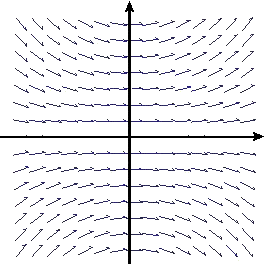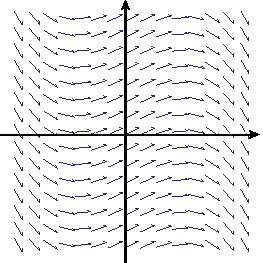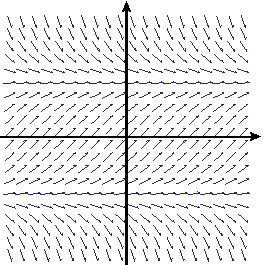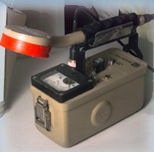Chapter 3
Initial Value Problems
3.1 Differential Equations and Initial Values
Problems
- Find three solutions of each of the following differential equations.
- `(dy)/(dt)=7y`
- `(dy)/(dt)=7t`
- `(dy)/(dt)=1.07y`
- `(dy)/(dt)=1.07t`
- For each of the following differential equations, sketch the graphs of three solutions.
(You may use your computer, your graphing calculator, and/or
your solutions to Problem 1.)
- `(dy)/(dt)=7y`
- `(dy)/(dt)=7t`
- `(dy)/(dt)=1.07y`
- `(dy)/(dt)=1.07t`
- Find the solution of each of the following initial value problems.
- `(dy)/(dt)=7y` with `y=2` at `t=0`
- `(dy)/(dt)=7t` with `y=2` at `t=0`
- `(dy)/(dt)=1.07y` with `y=2.3` at `t=0`
- `(dy)/(dt)=1.07t` with `y=2.3` at `t=0`
- For each of the following initial value problems, sketch the graph of the solution.
(You may use your computer, your graphing calculator, and/or
your solutions to Problem 3.)
- `(dy)/(dt)=7y` with `y=2` at `t=0`
- `(dy)/(dt)=7t` with `y=2` at `t=0`
- `(dy)/(dt)=1.07y` with `y=2.3` at `t=0`
- `(dy)/(dt)=1.07t` with `y=2.3` at `t=0`
-
In each of a-d, we show a slope field. By clicking on each image, you can get a page from which you can print your own copy. On each slope field, sketch three solution functions.
a. 
b. 
c. 
d. 
-
- Sketch a slope field for `dy text[/] dt=0.5t`. (You can do this on a sheet of notebook paper — precise measurement is not required.)
- Sketch a solution.
- What feature of the slope field corresponds to the fact that `y` does not appear in the derivative?
- The slope field in Problem 5c comes from a differential equation of the form `dy text[/] dt=gtext[(]t text[)]`. What geometric characteristic of the field signals the fact that the right-hand side of the differential equation does not depend on `y`?
- The slope fields in Problems 5b and 5d come from differential equations of the form `dy text[/] dt=g text[(]y text[)]`. What geometric characteristic of these field signals the fact that the right-hand side of each differential equation does not depend on `t`?
-
- Let `y=2-2e^(-3t)`. Find `(dy)/(dt)`.
- Show that `y=2-2e^(-3t)` is a solution of `(dy)/(dt)=6-3y`.
-
For the slope field in Exercise 12a (repeated here), does the right-hand side of the differential equation depend on `y` only, on `t` only, on both `y` and `t`, or on neither `y` nor `t`? Explain.
-
 Table E1 shows the number of disintegrations per minute counted by a Geiger counter that is testing a sample of radioactive barium-137. The disintegration rate of a radioactive substance is proportional to the amount of the substance not yet disintegrated.
Table E1 shows the number of disintegrations per minute counted by a Geiger counter that is testing a sample of radioactive barium-137. The disintegration rate of a radioactive substance is proportional to the amount of the substance not yet disintegrated.
- Find a formula for a function that approximately fits the data.
- Find the half-life of barium-137, that is, the time it takes for a given sample to decay to half the original amount.
Table E1 Disintegrations per minute
for radioactive barium-137Time (minutes)Counts per minute010,034181052583234553433395264862035
This problem is adapted from the Core-Plus Mathematics Project.


